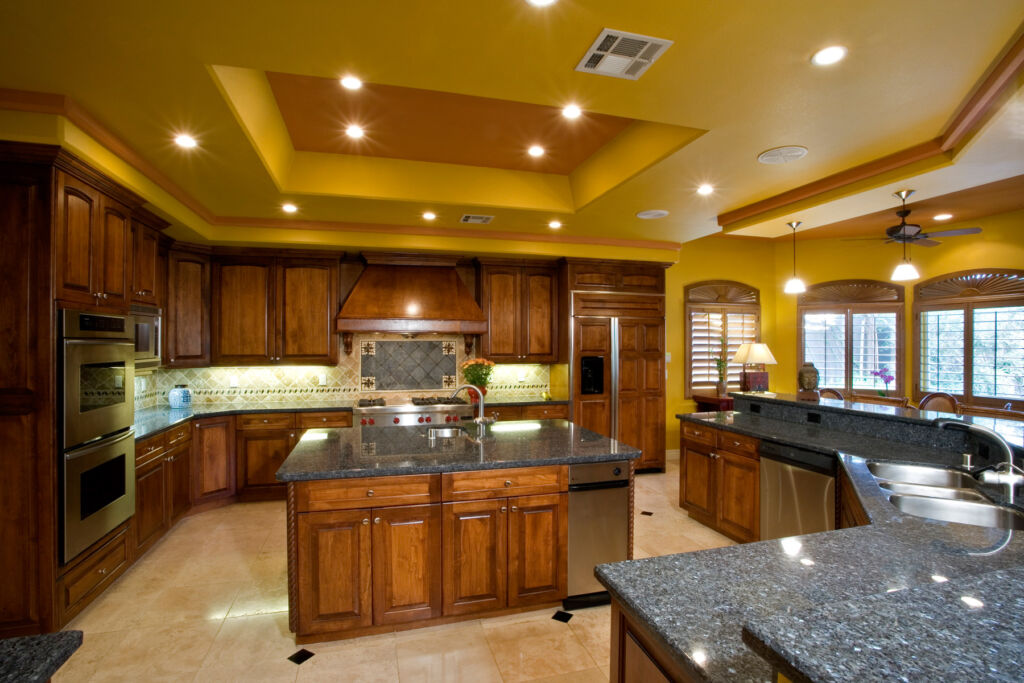
In recent years, the concept of buying and selling used kitchens has gained traction amongst eco-conscious homeowners. This shift is part of a broader trend towards sustainable living and making environmentally friendly choices. Below, Daniel Abrahams explains what is causing the rise in interest.
According to a study conducted by McKinsey and NielsenIQ in May 2023, consumers are increasingly directing their spending towards products that align with environmental, social and governance (ESG) principles. This has led to retailers and suppliers of second-hand products emerging as valuable resources, offering a number of customisable options at fair prices to meet the diverse needs of eco-conscious consumers on a budget.
Re-vamp your home: The rise of eco-friendly renovations

There is growing interest in sustainable and eco-friendly home renovations. According to the Home Improvement Trends Report 2023, almost half of UK homeowners are keen on making their homes more environmentally friendly – a surge that is reflected in the statistics surrounding the second-hand kitchen market.
As kitchen costs have soared by 22% over the last four years, more consumers are turning to used and ex-display kitchens as a cost-effective alternative. The cost-of-living crisis has further driven this trend, allowing consumers to upgrade their kitchens for less.
Moreover, a poll carried out by The Independent reveals that over two-thirds of consumers desire brands to take more action in reducing waste. This shift in mindset highlights a significant move towards sustainability and waste reduction.
Eco-savvy kitchens: The green perks of buying and selling second-hand
The materials commonly used within kitchens can have a remarkable effect on your total carbon footprint. According to the architecture and design platform Modlar, softwood timber emits an average of 100kg of embodied carbon per m³ whilst steel emits 12,090kg per m³.
Therefore, not only incorporating more sustainable materials but also re-using kitchen components with a higher carbon footprint can play a crucial role in waste reduction and resource conservation.
Similarly, the building and construction industry is a major contributor to global carbon emissions. However, a study reveals that over the course of an average building’s life span, the carbon footprint of its interiors will equal (if not exceed) that of the structure’s construction, proving that interior designers have a major impact on climate change.
Through the promotion of pre-owned kitchens, interior designers can help reduce the demand for new kitchen production, mitigating the environmental impact associated with manufacturing and disposal processes.
Unlocking savings: Economic benefits for smart shoppers
One of the most appealing aspects of purchasing a second-hand kitchen is the potential for significant cost savings. Rated People found that in 2024, the average homeowner spends between £5,000 and £12,000 on a new kitchen, with luxury installations costing upwards of £28,000. In contrast, buying a pre-owned kitchen allows consumers to access high-end designs at a fraction of the price.
This economic benefit makes it an attractive option for budget-conscious homeowners who do not want to compromise on quality. By balancing cost savings with the quality of materials, consumers can achieve their desired kitchen aesthetic without breaking the bank.
Quality vs aesthetics: Debunking the myths and revealing the realities
There are several misconceptions about the quality and appearance of used kitchens. Many people assume that second-hand kitchens are of inferior quality or outdated in style. However, with careful selection, it is possible to find high-quality, aesthetically pleasing kitchens that fit perfectly into your home.
When purchasing a used kitchen, it is essential to consider factors such as quality, specific measurements and any signs of general wear and tear. By paying attention to these details, homeowners can ensure that their “new” kitchen is both functional and visually appealing.
To conclude, opting for a used kitchen offers numerous environmental and economic benefits. It reduces waste, conserves resources and lowers the carbon footprint associated with new kitchen production. Economically, it allows consumers to achieve significant savings without sacrificing on quality or style.
This trend towards sustainable home renovations is a positive step in promoting environmentally friendly practices and reducing overall consumption. As more consumers embrace this approach, the impact on sustainable living will continue to grow. For your next renovation project, why not consider exploring second-hand options? It’s a smart choice – not only for your wallet but for the planet, too.
This opinion piece was written by Daniel Abrahams, the founder of Used Kitchen Hub.

![]()




You must be logged in to post a comment.